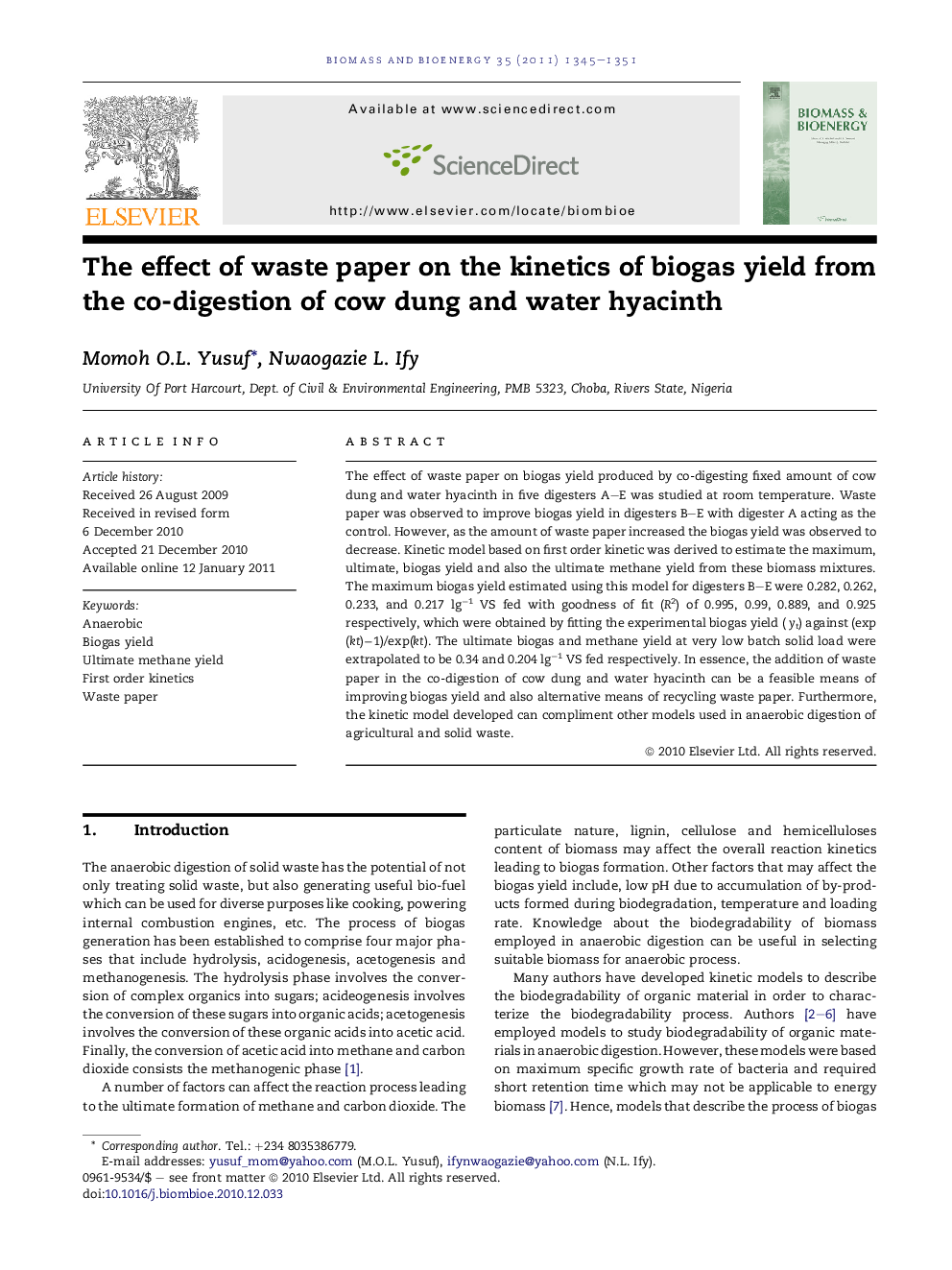| Article ID | Journal | Published Year | Pages | File Type |
|---|---|---|---|---|
| 10393836 | Biomass and Bioenergy | 2011 | 7 Pages |
Abstract
The effect of waste paper on biogas yield produced by co-digesting fixed amount of cow dung and water hyacinth in five digesters A-E was studied at room temperature. Waste paper was observed to improve biogas yield in digesters B-E with digester A acting as the control. However, as the amount of waste paper increased the biogas yield was observed to decrease. Kinetic model based on first order kinetic was derived to estimate the maximum, ultimate, biogas yield and also the ultimate methane yield from these biomass mixtures. The maximum biogas yield estimated using this model for digesters B-E were 0.282, 0.262, 0.233, and 0.217Â lgâ1Â VS fed with goodness of fit (R2) of 0.995, 0.99, 0.889, and 0.925 respectively, which were obtained by fitting the experimental biogas yield (yt) against (exp(kt)â1)/exp(kt). The ultimate biogas and methane yield at very low batch solid load were extrapolated to be 0.34 and 0.204Â lgâ1Â VS fed respectively. In essence, the addition of waste paper in the co-digestion of cow dung and water hyacinth can be a feasible means of improving biogas yield and also alternative means of recycling waste paper. Furthermore, the kinetic model developed can compliment other models used in anaerobic digestion of agricultural and solid waste.
Related Topics
Physical Sciences and Engineering
Chemical Engineering
Process Chemistry and Technology
Authors
Momoh O.L. Yusuf, Nwaogazie L. Ify,
